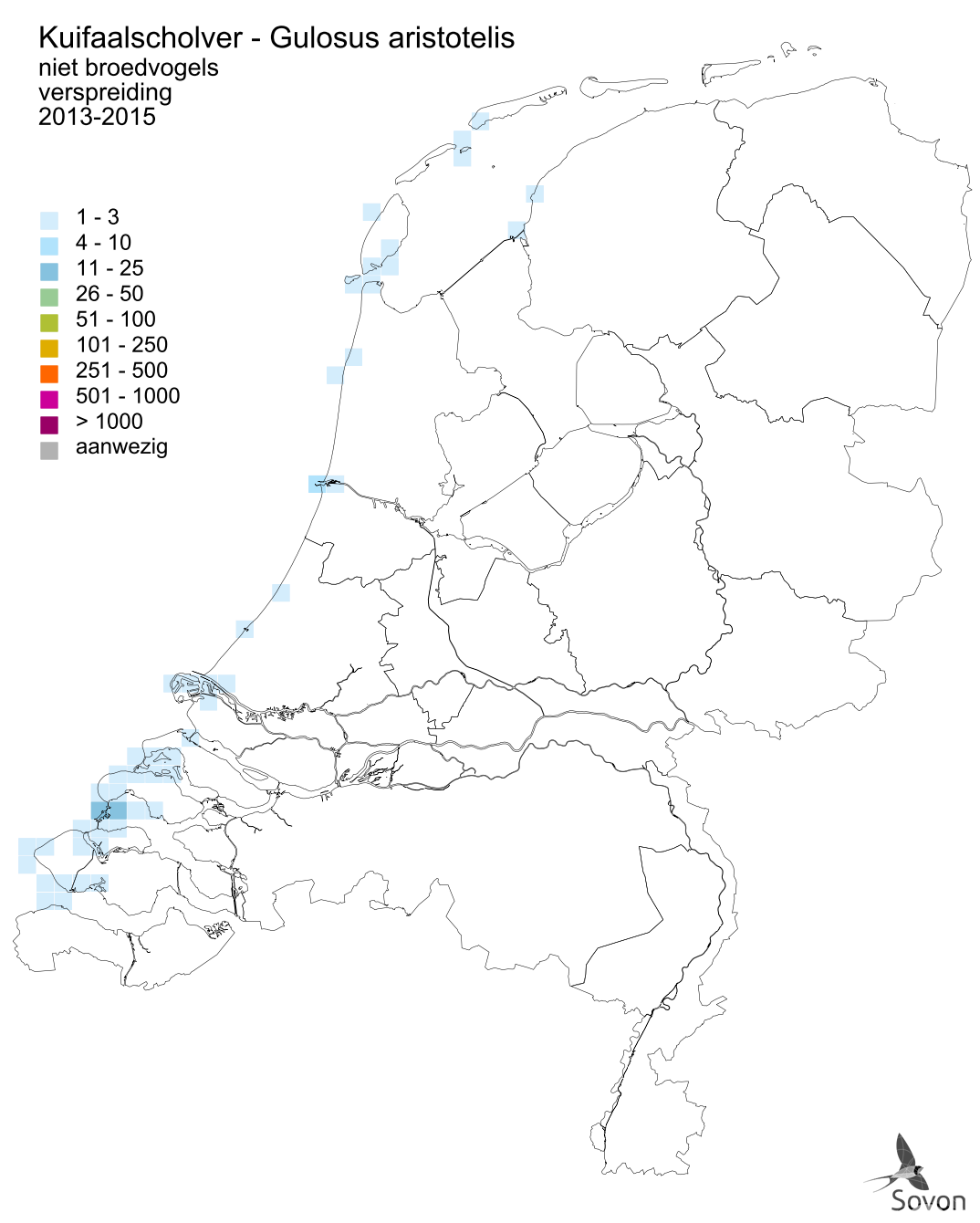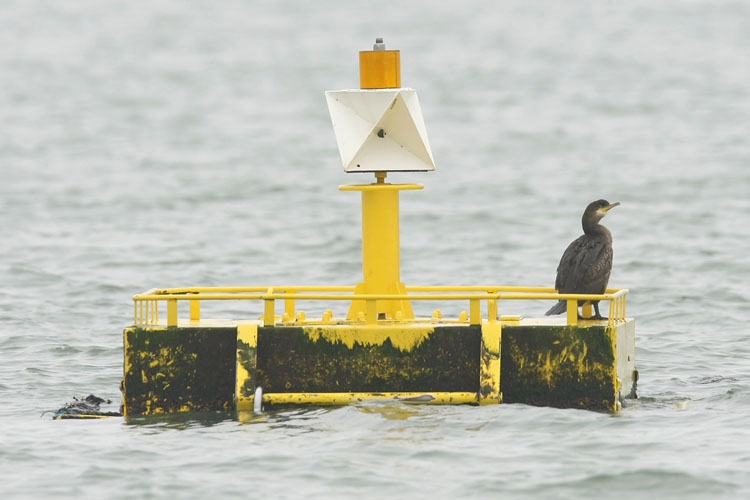Verspreiding en trends
Verspreiding

Deze kaart is gebaseerd op de Vogelatlas van Nederland (Sovon 2018). Per atlasblok van 5x5 km is er een schatting van het aantal broedparen gegeven.

Deze kaart is gebaseerd op de Vogelatlas van Nederland (Sovon 2018). Per atlasblok van 5x5 km is er een schatting van het aantal individuen gegeven.
Aantalsontwikkeling
broedvogeltrend
Deze grafiek is gebaseerd op het Meetnet Broedvogels (kolonies en zeldzame broedvogels). Weergegeven is het jaarlijks aantal broedvogels/territoria.
- vanaf 1990
watervogeltrend
Deze grafiek is gebaseerd op het Meetnet Watervogels (seizoen juli t/m juni). Weergegeven is het seizoensgemiddelde in de monitoringgebieden (rode punten), de trendlijn (donker gekleurde lijn) en het 95% betrouwbaarheidsinterval van de trendlijn (lichtgekleurde lijn).
- vanaf 1987
- significante toename, >5% per jaar (++, minimaal verdubbeling in 15 jaar)
- laatste 12 jaar
- geen significante aantalsverandering (0)
Broedsucces en overleving
Onvoldoende gegevens beschikbaar voor trendanalyse.
Seizoensvoorkomen
seizoenspatroon
Deze gegevens zijn gebaseerd op losse waarnemingen uit het Bijzondere Soorten Project (BSP)
Beschrijving voorkomen
Buiten broedtijd
Kuifaalscholvers worden vrijwel alleen op stenige plekken langs de kust gezien, met name bij pieren en werkeilanden. Het gaat om solitaire vogels of kleine groepjes die soms maandenlang ter plekke blijven. De meeste waarnemingen vallen tussen half augustus en half april. De aantallen lijken in het laatste kwart van de twintigste eeuw te zijn toegenomen. Dit valt samen met een toename van de Britse broedpopulatie, maar wordt ook veroorzaakt door toegenomen waarneemintensiteit en verbeterde determinatiekennis. Binnenlandwaarnemingen zijn bij ons overigens zeer zeldzaam.
Broedtijd
Het eerste zekere broedgeval vond plaats in 2013 op Neeltje Jans. Het volgde op enkele jaren waarin Kuifaalscholvers al aanstalten leken te maken om te broeden, hier en in IJmuiden en in de haven van Rotterdam. Als broedvogel van rotskusten kozen de vogels een met zware rotsblokken versterkte strekdam.
Vogelrichtlijn
Staat van instandhouding
De Vogelrichtlijn richt zich op de instandhouding van alle natuurlijk in Europa in het wild levende vogelsoorten waaronder de Kuifaalscholver.
Dit betekent dat de EU-lidstaten maatregelen moeten nemen om de populaties van deze soorten op een niveau te houden of te brengen dat met name beantwoordt aan de ecologische, wetenschappelijke en culturele eisen. Daaronder wordt onder andere een gunstige staat van instandhouding verstaan. Het begrip Staat van instandhouding is zo ongeveer synoniem voor de mate van duurzaamheid of gezondheid van een populatie van een soort.
De Vogelrichtlijn verlangt van de lidstaten dat ze leefgebieden voor vogels in voldoende omvang en kwaliteit in stand houden, waaronder door de aanwijzing van speciale beschermingszones ten behoeve van het Europese Natura 2000-netwerk. Voor de Kuifaalscholver zijn in Nederland geen speciale beschermingszones aangewezen. De landelijke populatie moet zich wel op een gunstig niveau kunnen handhaven.
Methodiek voor de bepaling van de Staat van instandhouding van vogels
niet-broedvogel
De Staat van Instandhouding van de Kuifaalscholver als niet-broedvogel in Nederland is gunstig.
| Beoordeling Staat van Instandhouding | ||||
| Verspreiding | Populatie | Leefgebied | Toekomst | Eindoordeel |
| gunstig | gunstig | gunstig | gunstig | gunstig |
Aangewezen gebieden
Er zijn geen gebieden aangewezen voor deze soort.
Telrichtlijnen
Er zijn geen telrichtlijnen voor deze soort.
